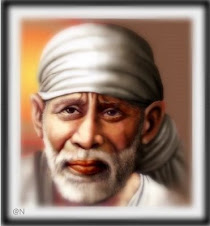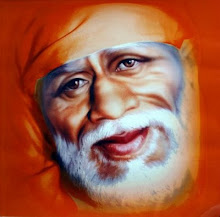

The padukas were the initiative of a couple of devotees from Bombay. During their visit to Shirdi they became friendly with two local devotees, G. K. Dixit (not to be confused with H. S. "Kakasaheb" Dixit) and Sagun Meru Naik. As they were sitting talking one day, they all felt it would be good if there were some kind of memorial to Baba's advent in Shirdi and his stay under the neem tree. They first thought of laying some padukas made of rough stone. Then one of them suggested that if he put the proposal to his employer, Dr Ramrao Kothare (who had accompanied them to Shirdi), he would probably be willing to sponsor something more elegant. Dr Kothare gladly came back to Shirdi from Bombay, drew up a plan for the padukas and showed it to Upasani Baba. Sri Upasani made some improvements adding a conch, lotus, and Mahavishnu wheel, and suggested that two of his Sanskrit slokas extolling the tree's greatness and Baba's powers be inscribed on the padukas' pedestal. These slokas constitute part of Sri Sainatha Mahima Stotram, which is sung twice a day in Shirdi as part of the noon and evening aratis. They translate as follows:
I bow to Lord Sainath, who by his constant stay at the foot of the neem tree - which although bitter and unpleasant, was yet oozing nectar - made it better than the wish-fulfilling tree.
I bow to Lord Sainath, who always takes delight in resting under the neem tree and bestowing material and spiritual prosperity upon his devotees who lovingly attend on him.
The padukas were made in Bombay and sent to Shirdi. When they arrived, Baba said they should be installed on August full moon day. So on 15 August 1912 they were duly taken in ceremonious procession from Khandoba Temple to the mosque, where Baba touched them and said they were Allah's padukas and to put them at the foot of the neem tree.
Arati was already being performed every day in Sathe Wada and Dixit Wada, and with the installation of the padukas at Gurusthan, a third was started; G. K. Dixit (who had carried them on his head) was employed to officiate.
A few months after their installation the padukas were damaged by a lunatic who also destroyed some of Shirdi's temple idols. The devotees were very distressed, believing it augured ill. Baba, however, took the matter casually and told them simply to repair the crack with cement and undertake a feeding of the poor. Later, the broken padukas were replaced and the originals are said to be in the pedestal underneath.
The lingam was installed in Gurusthan the same year. It had previously belonged to Megha Shyam, a zealous devotee of Sri Sai Baba, who had taken over officiating at the arati in the mosque after the demise of Tatyasaheb Noolkar. How Megha acquired the lingam is a beautiful example of Baba's leela. Megha was a simple, austere Gujarati Brahmin, who worshipped Shiva but saw his chosen deity in Sai Baba. Characteristically, Baba encouraged his devotee to maintain his worship of Shiva. One day Baba blessed him with a vision, appearing to him early one morning telling him to draw a trident (emblem of Shiva) and leaving behind a few grains of akshata (rice that has been coloured red, used in worship). When Megha went to him in the mosque Baba emphatically confirmed the instruction, and Megha returned to his room to carry it out. The next day someone presented a Shivalingam to Baba. Baba called Megha over, saying, "Look, Shiva has come for you!" and giving the lingam to Megha, told him to use it for worship.
At that time, Megha was staying in Dixit Wada. He took the lingam home with him and showed it to H. S. Dixit. Dixit then disclosed a strange coincidence: he had just had his bath and was thinking of Baba, when he had a vision of a lingam arriving at the wada - whose exact replica Megha was now bringing!
Megha worshipped this lingam with great dedication until the end of his days. When the padukas were to be installed, the devotees wanted to take the opportunity to put a Shiva-lingam there too. If there was a tomb here as Baba had said, then according to Hindu custom, it required a lingam. They therefore asked Baba's permission and he said they could use the lingam that Megha had worshipped until his death at the beginning of that year. So the lingam that we see there now is the same one that Baba lovingly handed over to Megha.
During Baba's lifetime, Gurusthan was completely open and looked quite different from the fully paved and enclosed area it has now become. Sri Sai Baba said that whoever burns incense and cleans here on Thursdays and Fridays would be blessed by Allah (Thursday is sacred to Hindus, and Friday to Muslims). We assume that out of love and respect for his guru, Baba wishes the place to be venerated and kept clean.
A small dhuni on a stand is kept in front of the shrine here. Until recently it was kindled every day by embers brought from the main dhuni at the mosque, but this is now done only on Thursdays and Fridays.
Finally, before we leave Gurusthan, let us return to the mighty neem tree. Since the 1980s, with Sri Babuji's example and encouragement, more and more devotees have started doing pradakshina around the tree (and thereby the tomb). Now, one can often see large numbers of people going around throughout the day and night. Others find that Gurusthan is a powerful place to sit quietly. Some people regard the tree as a symbol of the Guru's grace under which humanity may take shelter and protection. Indeed, Sai Baba once commented that his devotees are simply resting in the shade of the neem tree while he bears the brunt of their deeds.
BOW TO SHRI SAI - PEACE BE TO ALL







No comments:
Post a Comment